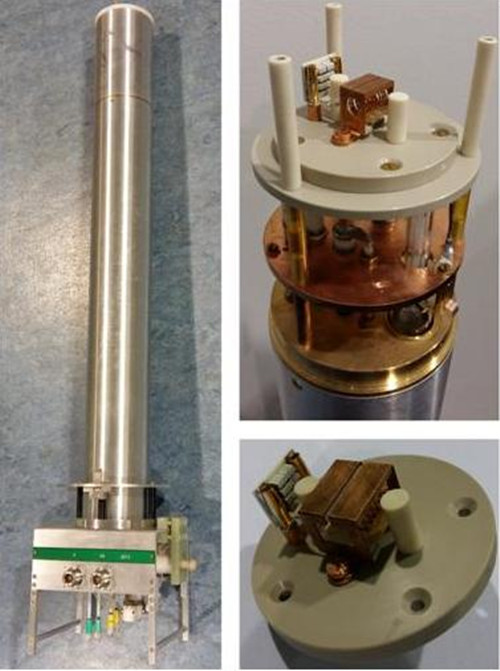Dec 10,2015|By
Recently, scientists from the High Magnetic Field Laboratory, Chinese Academy of Sciences (CHMFL) built a 600 MHz 1H/X double resonance static probe, which is able to produce very homogeneous and strong radio-frequency magnetic field (i.e. RF magnetic field or B1 field) while reduce the electric field to the utmost extent.
Solid-state NMR spectroscopy is a powerful technique capable of providing information about the structure of the materials in the atomic scale and about the dynamics within those materials, thus it is extensively used in material science and structural biology.
NMR sensitivity and spectral resolution benefit from high magnetic field. However, on the other hand, high magnetic field poses challenges to probe design, which is noticeably manifested by decreased B1 field homogeneity, limited B1 field strength, strong electric field “cooking” or damaging biologic samples. These eventually lead to the loss of sensitivity, which is intrinsically poor and needs to be continually improved by NMR community.
Through introduction and integration of techniques, such as cross-coil and balanced circuit, into the design, the probe achieves the following specifications: (1) 1H channel B1 homogeneity measured by the ratio of signal intensities for an 810 pulse versus a 90 pulse (A810/A90) is around 96%, the maximum decoupling field is 132 kHz * 80 ms, RF power loss in 0~1000 mM NaCl solution is 0.02 mW kHz-2 mM-1 which is only 10% of that in conventional probes that use a 6-turn solenoid, so significantly reduces the RF heating; (2) X channel is truly wideband and can cover frequency up to 31P, B1 homogeneity A810/A90 is around 83%; (3) 13C sensitivity of Adamantane static CP spectrum recorded by this probe and a commercial 4 mm MAS probe are 88 and 46, respectively, showing a much increase in sensitivity of X channel detection.
This probe will open to user worldwide. For scientists who work on material science, aligned membrane proteins and low- NMR at high-field, our high sensitive static probe might help.
This work was partially supported by national natural science foundation of China.
 |
Attachments Download: